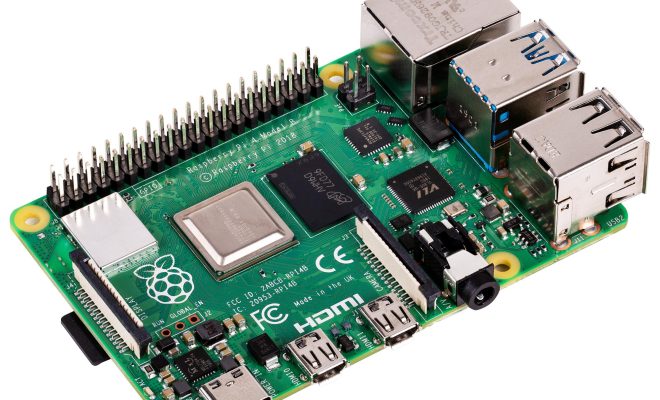The Ultimate Raspberry Pi Commands Cheat Sheet

The Raspberry Pi is a versatile and powerful single-board computer that has exploded in popularity over the years. It allows users to create anything from simple home automation systems to complex robotics projects. However, to unleash the full potential of the Raspberry Pi, you must be familiar with the different commands that control its functionality.
In this article, we will introduce you to the ultimate Raspberry Pi commands cheat sheet that contains the most important and commonly used commands for operating the Raspberry Pi.
1. The reboot command
The reboot command performs a system reboot of the Raspberry Pi. It is used when you want to restart the system to apply changes or to refresh the system. To execute this command, you need to type “sudo reboot” in the terminal. The “sudo” command is necessary to gain administrative privileges and perform this operation.
2. The shutdown command
The shutdown command is used to shut down the Raspberry Pi properly. It is essential to shut down the system correctly to avoid data loss and hardware damage. To execute this command, type “sudo shutdown -h now” in the terminal. The “-h now” command will initiate an immediate shutdown of the Raspberry Pi.
3. The apt-get command
The apt-get command is a core utility used to manage software packages on the Raspberry Pi. It is used to search, install, and remove applications from the system. To install a package, type “sudo apt-get install [package_name]”. To remove a package, type “sudo apt-get remove [package_name]”.
4. The update command
The update command is used to update the Raspberry Pi software and packages to the latest versions. Keeping your system up to date ensures efficient performance and optimal functionality. To execute this command, type “sudo apt-get update && sudo apt-get upgrade” in the terminal.
5. The sudo command
The sudo command is one of the most important commands in the Raspberry Pi terminal. It is used to perform administrative tasks and gain elevated privileges. To execute this command, type “sudo [command]” in the terminal.
6. The ping command
The ping command is used to test the connectivity between the Raspberry Pi and a specific location on the internet. It is helpful in diagnosing network issues and identifying the cause of connection problems. To execute this command, type “ping [website_address]”.
7. The nano command
The nano command is a text editor used to create and edit files and scripts on the Raspberry Pi. It is simple and easy to use, making it an essential utility for coding and scripting. To execute this command, type “nano [file_name]”.
8. The ls command
The ls command is used to list the files and directories in the current working directory. It is helpful in navigating and searching for files on the Raspberry Pi. To execute this command, type “ls”.
9. The cd command
The cd command is used to change the working directory on the Raspberry Pi. It is helpful in navigating and accessing different directories and folders. To execute this command, type “cd [directory_path]”.
10. The ifconfig command
The ifconfig command is used to view the network configuration of the Raspberry Pi. It provides information about the network interfaces and their status. To execute this command, type “ifconfig”.
In conclusion, with the ultimate Raspberry Pi commands cheat sheet, you have the power to operate and control your Raspberry Pi efficiently. These essential commands will help you manage software packages, perform administrative tasks, edit files and scripts, diagnose network issues, and navigate the system’s different directories and folders. Make sure to bookmark this cheat sheet for your next Raspberry Pi project. Happy coding!






